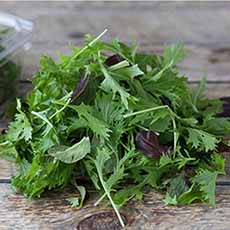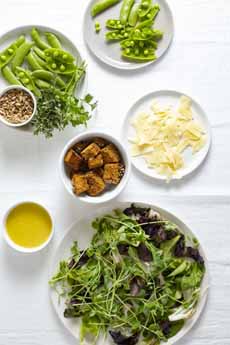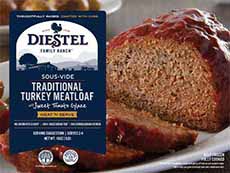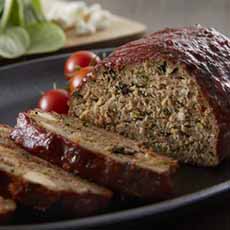|

[1] Braised chicken thighs atop creamy polenta (photo © Good Eggs).
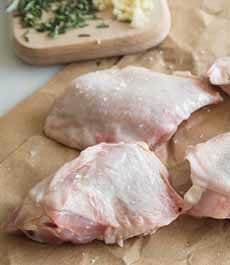
[2] Large chicken thighs (photo © Good Eggs)
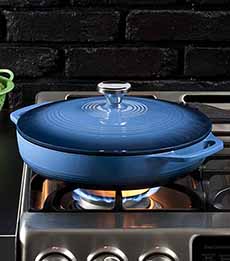
[3] Use a braising dish or a casserole dish. A Dutch oven also works (photo of casserole dish © Lodge Cast Iron).
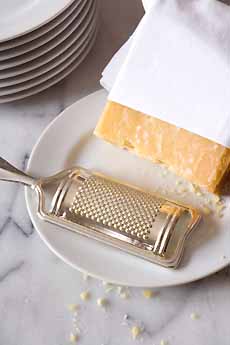
[4] A wedge of Parmigiano-Reggiano, ready to grate (photo © YinYang iStock Photo).
|
|
As a follow up to our polenta discussion and recipe earlier today, here’s another great way to serve it.
Serve your mains with creamy polenta instead of grain, noodles or potatoes.
RECIPE: CHICKEN THIGHS WITH POLENTA
Thanks to Good Eggs for the recipe. Note that although this recipe says it provides three servings, we could eat all three chicken thighs ourselves (we’re not known for a modest appetite).
Ingredients For 3 Servings
1 cup polenta
1 tablespoons butter
Parmigiano Reggiano cheese, freshly grated
A handful of parsley, roughly chopped
3 large chicken thighs
2 yellow onions, cut in half and sliced into ¼” pieces
6 cloves of garlic, sliced
2 carrots, peeled cut into ¼ inch pieces
½ can whole tomatoes (ideally San Marzano), roughly chopped and 1 cup of the liquid reserved
2-3 cups of chicken stock (substitute water)
2-3 bay leaves
4 or 5 black peppercorns
2 tablespoons canola oil
Preparation
1. PAT the chicken dry with a paper towel and season with salt and pepper on both sides.
2. ADD the canola oil to a braising dish, casserole dish or Dutch oven (photo #2): wide and deep, with a fitted lid. Place it over high heat. When the oil is hot, add the chicken, skin side down.
3. BROWN the chicken for 2-3 minutes on each side, until it’s nice and golden brown. Remove the chicken from the pan, leaving the drippings, and add the garlic, onions and carrots. Brown until they have some color, about 2 minutes. Remove them from the pan.
Once you’re through browning the chicken and vegetables…
4. POUR off the fat into an empty jar or other receptacle, but not down the sink! Turn the heat to medium and add the tomatoes, along with their liquid, to the pan. With a wooden spoon, scrape the fond (brown bits) off the bottom of the pan and stir into the tomato sauce (this is called deglazing).
5. ADD the vegetables and the chicken, skin side up, back to the pan and arrange in a single layer. Pour in enough stock or water to bring the level of liquid to just about the level of the chicken skin, and add the bay leaves. Cover the pan with its lid and simmer for about an hour.
While the chicken cooks…
6. MAKE the polenta. Bring 3 cups of water to boil in a pot. In a small bowl, whisk together a cup of water, a teaspoon of salt and a cup of polenta. When the water is at a rolling boil, add the water-polenta mixture and turn the heat down to medium.
7. COOK the polenta for 10-15 minutes, stirring occasionally to make sure it doesn’t stick to the bottom of the pot. When the water is absorbed and the polenta is the texture of a thick porridge, add a tablespoon or so of butter to taste. Season with parmigiano or salt to finish.
When the chicken is done…
8. SERVE the chicken and vegetables alongside the polenta, with some of the sauce spooned over it. Garnish with parsley and dig in!
MORE POLENTA RECIPES FOR YOU
|

